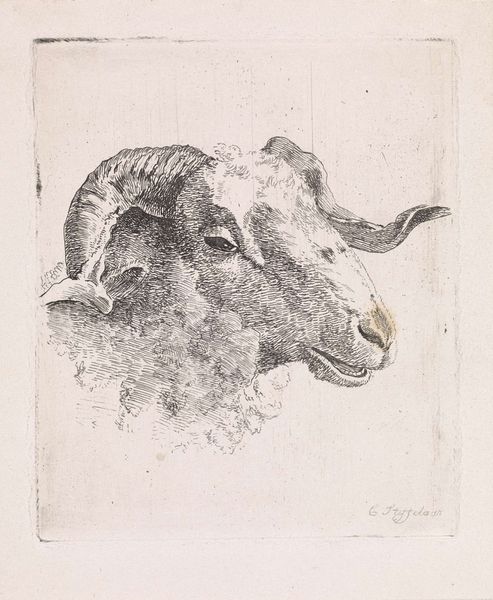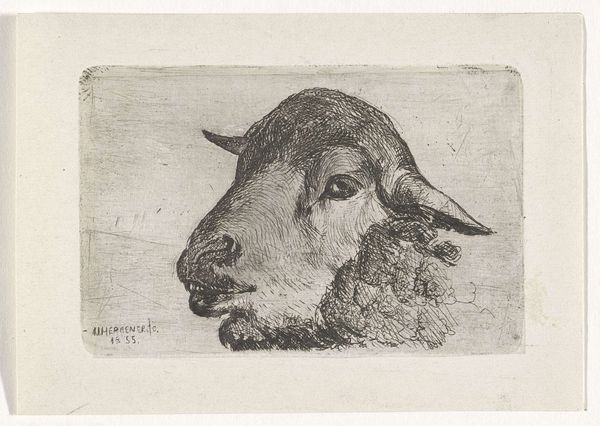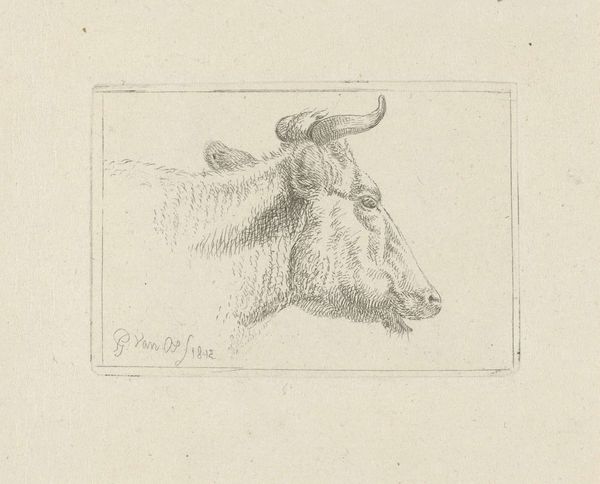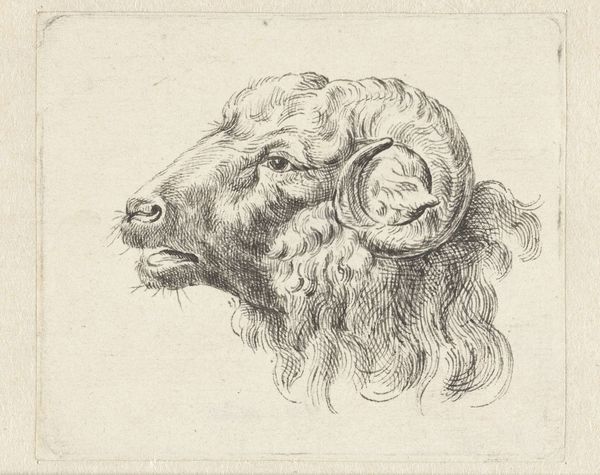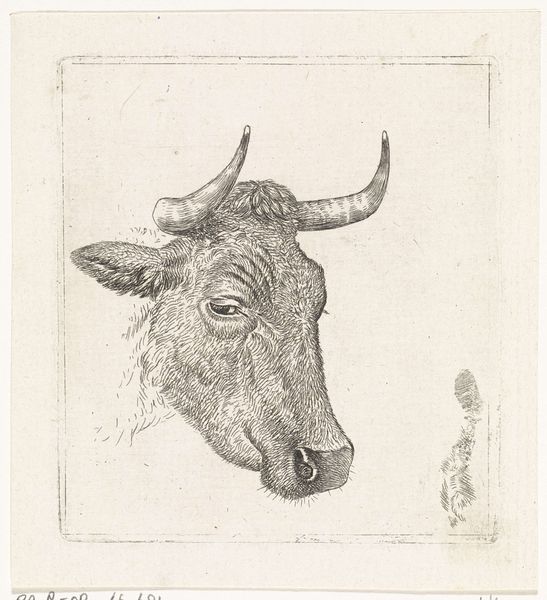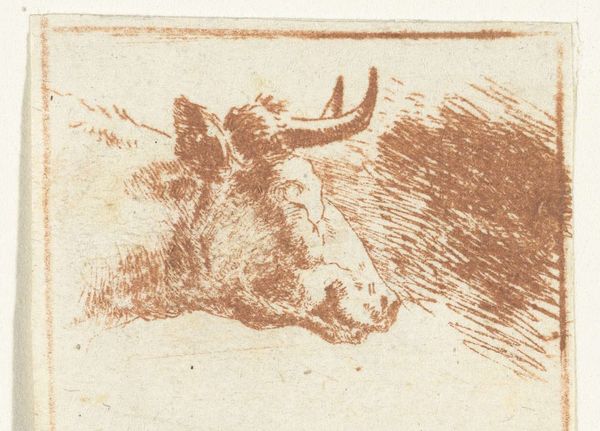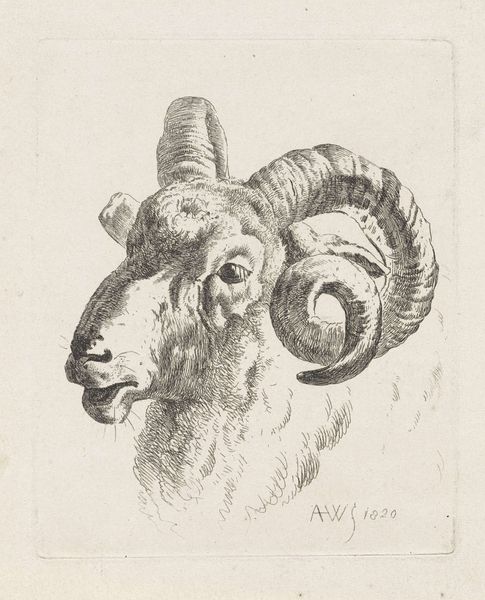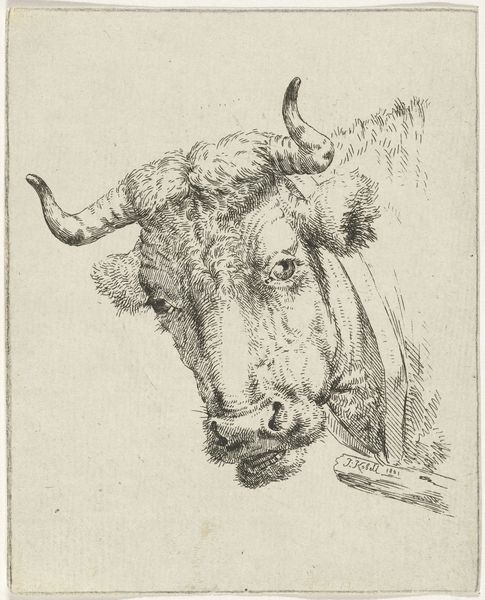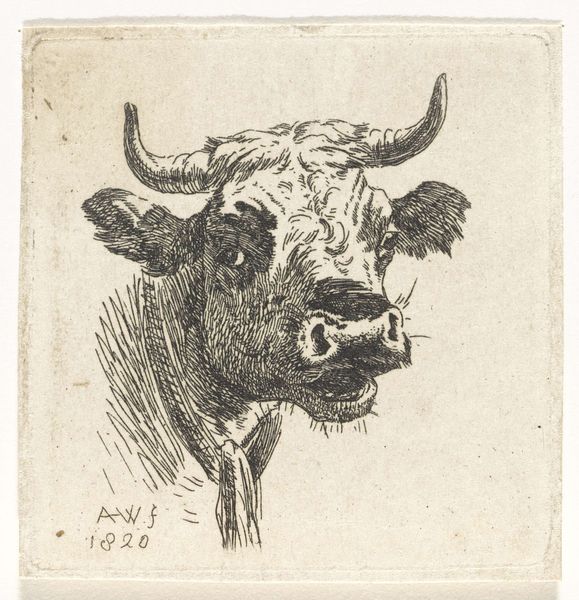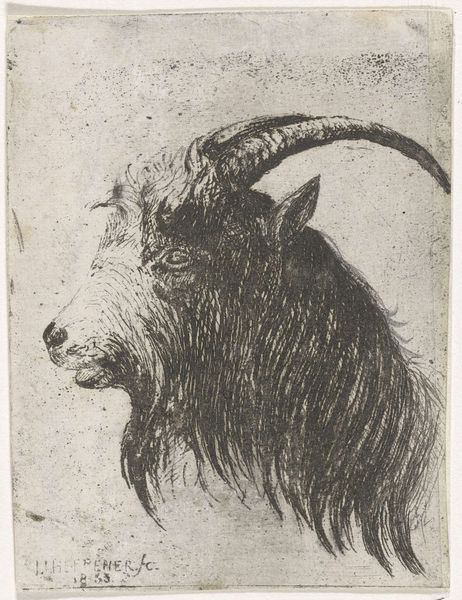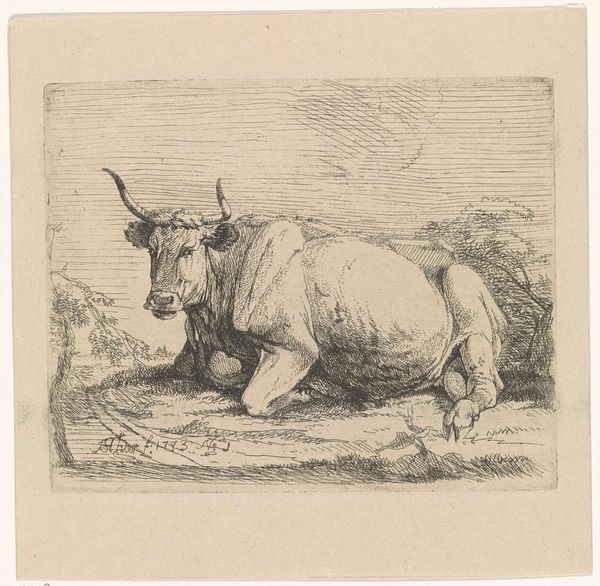
drawing, graphite
#
portrait
#
drawing
#
pencil sketch
#
charcoal drawing
#
pencil drawing
#
graphite
#
realism
Dimensions: height 85 mm, width 70 mm
Copyright: Rijks Museum: Open Domain
Curator: Up next we have “Kop van een ram,” or "Head of a Ram," by Cornelis Steffelaar, likely executed sometime between 1807 and 1861. It’s a graphite drawing that beautifully captures the texture and form of its subject. Editor: My immediate reaction is one of intense observation. The artist has rendered the ram’s face with such precision, it almost feels like a commentary on the selective breeding practices of the era, reducing an animal to its commodified, almost caricatured features. Curator: Absolutely, the detailed craftsmanship invites a look at the conditions of its making. We can see the careful application of graphite to create light and shadow, building form methodically, almost like piecework on an assembly line of artistic production. Editor: I’m particularly drawn to the ram's eyes. There's a sadness there, perhaps even a knowing gaze. Rams are often symbolic of virility and power, but this portrayal seems to subvert those associations, revealing the vulnerability inherent in domestication. Curator: Interesting perspective! It's easy to see the material elements lending themselves to such an interpretation. The graphite itself is relatively inexpensive and widely available, and here, applied so meticulously as if refining raw resources. It speaks volumes. Editor: Exactly. And in terms of broader contexts, thinking about livestock’s place in society… their association with agriculture, wealth, and patriarchal power… it becomes hard to ignore how even an animal portrait such as this becomes enmeshed in power relations. Curator: The artist, Cornelis Steffelaar, likely made a practical study, yet, to me, that deliberate practice elevates the humbleness and the animal to a status symbol, almost undermining social expectations in this detailed rendering. Editor: I agree. Thinking about it within current critical animal studies, the drawing prompts consideration of the non-human animal's agency within historical artistic representations. Is Steffelaar offering the ram any dignity, or perpetuating its objectification? It’s quite open-ended. Curator: Looking closely at Steffelaar's technique offers hints. Notice how he softens edges, contrasting sharply defined features with an impressionistic texture, using labor to subvert itself! Editor: This perspective really allows the dialogue between artistic interpretation and cultural analysis to deepen. Thinking of animal studies and representation here can shed light on many of our contemporary struggles for intersectional justice. Curator: True, and examining materiality exposes those subtle commentaries. Well, by acknowledging labor involved, perhaps it underscores more than just the ram! Editor: Absolutely, thank you for pointing that out.
Comments
No comments
Be the first to comment and join the conversation on the ultimate creative platform.
